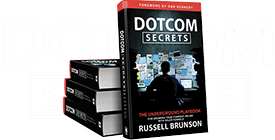We humans tend to think of ourselves as rational creatures but nothing could be further from the truth.
According to Gerard Zaltman, professor emeritus at the Harvard Business School, when it comes to buying something, 95% of our decision-making takes place in the subconscious mind.
That’s why seemingly insignificant tweaks to your sales pitch can help you close way more sales.
The Tie Down sales technique is one such tweak.
Here’s what we are going to discuss today:
- What is the Tie Down sales technique?
- Why does the Tie Down sales technique work?
- How to effectively implement the Tie Down sales technique?
So let’s get straight into it…
What Is the Tie Down Sales Technique?

A tie down is a question that is designed to elicit agreement from the potential customer.
For example:
- “…, yes?”
- “…, right?”
- “…, isn’t it?”
- “Sounds good?”
- “Does that make sense?”
- “Wouldn’t that be great?”
…etc.
When you use the Tie Down sales technique, you ask these questions throughout your sales pitch.
Why Does the Tie Down Sales Technique Work?
So why does eliciting agreement with tie downs make the potential customer more likely to buy your product?
The underlying mechanism that explains this is called the commitment and consistency principle.
It’s one of Robert Cialdini’s principles of persuasion that he describes in his best-selling “Influence”.
It can be summarized like this:
We value consistency in others and we want to be seen as consistent ourselves.
The Tie Down technique works because:
- It helps you build rapport. You create a pattern where the potential customer is repeatedly agreeing with you. Due to our subconscious need for consistency, this makes them less likely to break that pattern by rejecting your offer.
- It allows you to pre-emptively overcome potential objections by getting the customer to agree with a statement that would make raising a specific objection inconsistent with what they have said previously.
- It ensures that your sales pitch is a conversation, not a lecture where you do a monologue without any interaction with the potential customer.
In his book, Cialdini noted that charities that solicit donations via phone calls often begin the conversation by asking “How are you doing today?”, then proceed with their sales pitch once they have received a positive response:
“The caller’s intent with this sort of introduction is not merely to seem friendly and caring.
It is to get you to respond – as you normally do to such polite, superficial inquiries – with a polite, superficial comment of your own: “Just fine” or “Real good” or “I’m doing great, thanks”.
Once you have publicly stated that all is well, it becomes much easier to corner you into aiding those for whom all is not well:
“I’m glad to hear that because I’m calling to ask if you’d be willing to make a donation to help out the unfortunate victims of…”
Cialdini explains that the theory behind this technique is that people who have just asserted that they are doing fine will find it awkward to appear stingy in the context of their self-admitted favorable circumstances.
In other words, asking “How are you doing today?” allows the salesperson to pre-emptively overcome the objection of “I would love to help, but I’m struggling myself”. Ethically questionable, but also undeniably clever.
While this sales technique is different from the Tie Down technique, tie downs can be used in a similar way, which is what makes them so effective.
You just need to be strategic about what selling points you reinforce with them.
How To Implement the Tie Down Sales Technique
So how can you implement the Tie Down sales technique effectively?
Tip #1: Stay Ethical

When people learn why the Tie Down sales technique works, they often feel conflicted about using it.
It may feel like you would be exploiting an inherent vulnerability in human psychology by intentionally eliciting agreement as a way to pre-emptively overcome potential objections.
And it’s definitely true that this sales technique can be used unethically to manipulate people into buying products that they don’t need.
However, it’s important to note that the issue here isn’t the technique itself, it’s whether you believe that your product will provide enough value to the customer to justify its price.
If you feel like you are peddling junk that no one needs, you are going to be conflicted about using sales techniques to get people to buy from you.
But if you feel like you have a product that can truly add value to the potential customer’s life, then it can be argued that you have an obligation to be as effective at selling it as you possibly can.
For example:
Here at ClickFunnels, not only do we believe that mastering sales funnels can change people’s lives, we know it for a fact at this point (at least 737 people have generated over $1 million in revenue using our software so far).
That’s why we feel like we have an obligation to be as effective at selling our products as we possibly can, which is why we use proven sales techniques. Making more sales means changing more lives.
So if you find yourself hesitant to use the Tie Down sales technique because you have ethical reservations, ask yourself this question:
“Do I genuinely believe that my product adds value to people’s lives?”
Yes?
Then commit to becoming effective at selling it.
No?
Then find a product that you actually believe in.
The truth is that if you are an ethical person, the only way to become great at selling is to find a product that you can stand behind.
Otherwise, you will end up endlessly self-sabotaging, which is a problem that no sales technique can solve.
#2 Use the Tie Down Technique To Reinforce the Value of Your Product

You shouldn’t see the Tie Down technique as a way to corner the potential customer into buying your product.
Instead, you should use it to get them to acknowledge the value that your product brings, thus reinforcing that value in their mind.
For example:
If you are selling ecommerce software, you can use the tie down technique to help the potential customer understand how their life would be better if they switched to it:
- “Wouldn’t it be great if those features were available out-of-the-box?”
- “That would save you a ton of money, wouldn’t it?”
- “You want to scale your business, right?”
…etc.
That way, you are not only pre-emptively overcoming potential objections but also drawing the potential customer’s attention to the value that your product provides.
Once the potential customer has acknowledged those benefits, it will be much easier for you to close the sale.
#3 Don’t Overdo It!

It’s important to make sure that your tie downs sound natural if you want the Tie Down sales technique to work.
Think about your sales pitch:
- What key benefits do you want to emphasize?
- What potential objections do you want to address?
- Where can you add tie downs in a way that makes sense?
Keep in mind that no one likes being sold to.
The potential customer might be fully aware that they are hearing a sales pitch, but they will still be put off if they realize that you are using specific sales techniques on them.
That’s why you need to be careful and not overdo it with tie downs.
It may help to practice your sales pitch with a colleague, record that practice session, and then analyze it to see how you come across.
Are the tie downs noticeable? They shouldn’t be. They should be questions to which people answer in the affirmative without a second thought.
Take time to figure out how to incorporate tie downs into your sales pitch in the most natural way possible.
Conclusion
The Tie Down sales technique is a great way to close more sales.
What’s important is that you only sell products that you believe in, use tie downs to reinforce their value, and do it in a natural way.
We definitely recommend you to learn more about other proven sales techniques as well. You will be surprised by how much difference they can make when you are selling one-on-one.
But here’s the thing…
No matter how great you become at selling one-on-one, your earning potential will always be limited, since you only have so much time available in any given day. It’s not scalable.
That’s why it’s so important to build a system that allows you to make sales in your sleep.
One of our co-founders, Russel Brunson, has developed such a system. It’s called the Value Ladder sales funnel. Want to learn more about it?
We created our 5 Day Challenge to show you exactly how to implement this system in your business.
You will learn how to:
- Generate unlimited leads.
- Create your first lead magnet.
- Build your first sales funnel.
- Create a simple 6-email follow-up sequence.
- And launch your funnel!
…in just five days.
So don’t hesitate.


